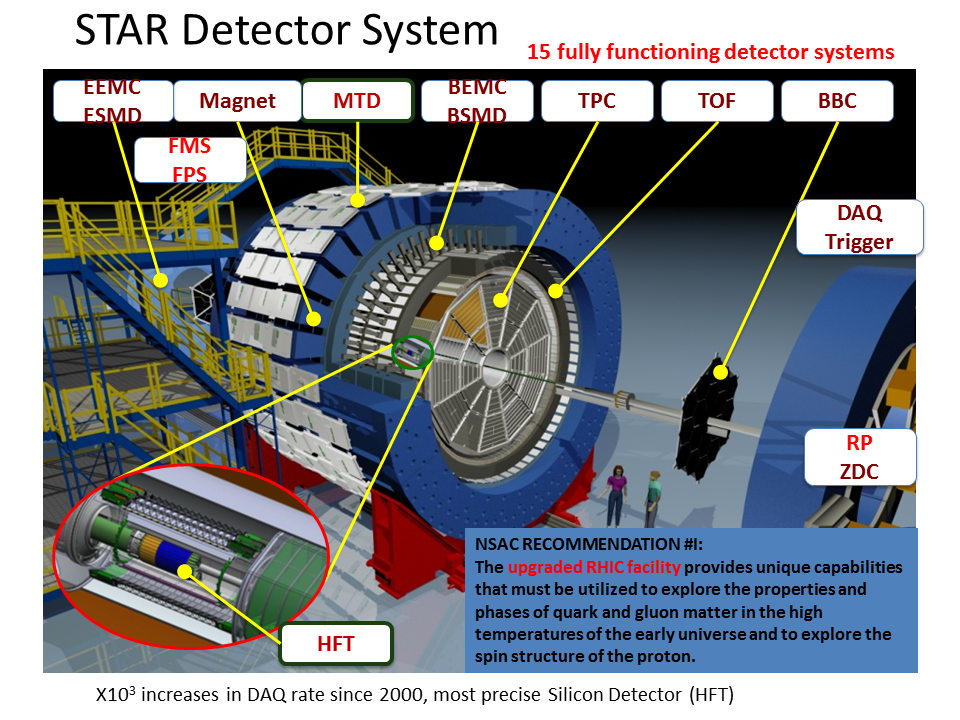The primary physics objective of STAR is to study the formation and characteristics of the quark-gluon plasma (QGP), a state of matter believed to exist at sufficiently high energy densities. We investigate quark and gluon interactions in protons and in the high-density matter formed in heavy-ion collisions at 200 GeV/nucleon. Detecting and understanding the QGP allows us to understand better the universe in the moments after the Big Bang, where the symmetries (and lack of symmetries) of our surroundings were put into motion.
Unlike other physics experiments where a theoretical idea can be tested directly by a single measurement, STAR must make use of a variety of simultaneous studies in order to draw strong conclusions about the QGP. This is due both to the complexity of the system formed in the high-energy nuclear collision and the unexplored landscape of the physics we study. STAR therefore consists of several types of detectors, each specializing in detecting certain types of particles or characterizing their motion. These detectors work together in an advanced data acquisition and subsequent physics analysis that allows final statements to be made about the collision. Our SSL group is responsible for the design, implementation, and operation of the STAR Trigger system. Project Website
